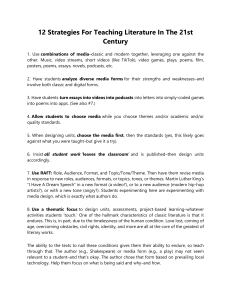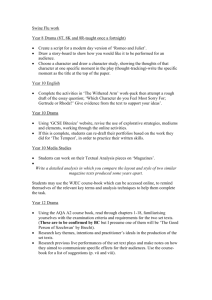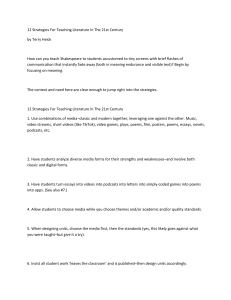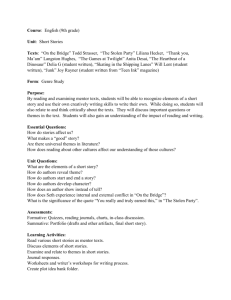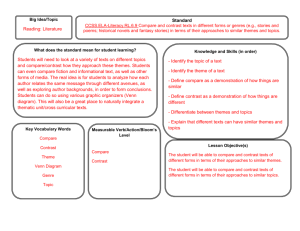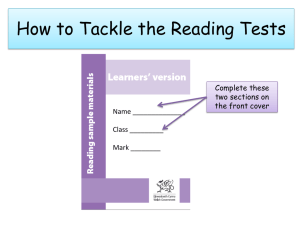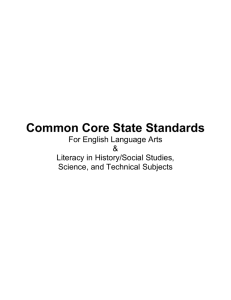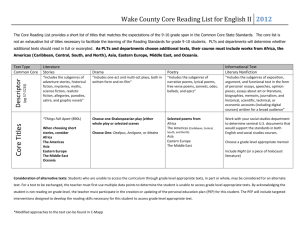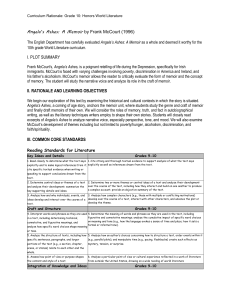Common Core Workshop
advertisement
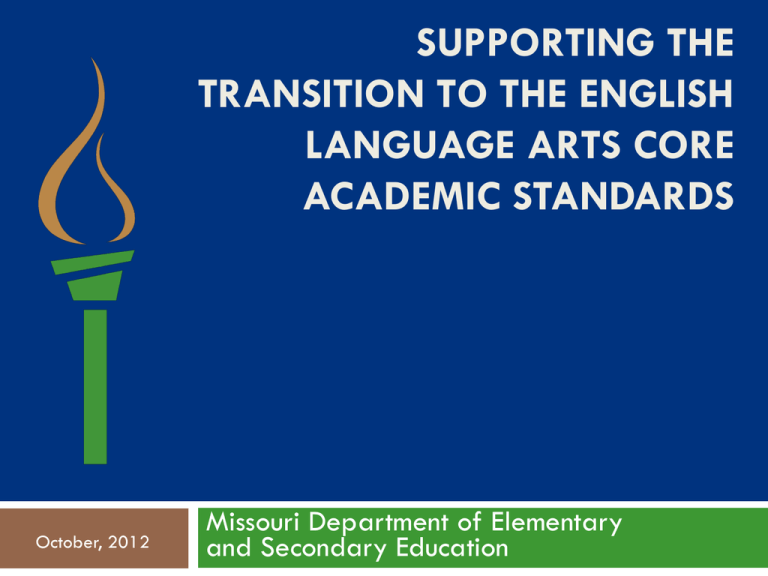
SUPPORTING THE TRANSITION TO THE ENGLISH LANGUAGE ARTS CORE ACADEMIC STANDARDS October, 2012 Missouri Department of Elementary and Secondary Education RESOURCES STUDENTS •TEACHERS •PARENTS • TYPES OF TEXT Grade 1 Identify basic similarities and differences between two texts on the same topic (e.g., in illustrations, descriptions, or procedures.) TYPES OF TEXT Grade 2 Compare and contrast two or more versions of the same story (e.g., Cinderella stories) by different authors or from different cultures. TYPES OF TEXT Grade 4 Determine the meaning of words and phrases as they are used in a text, including those that allude to significant characters found in mythology (e.g., Herculean). TYPES OF TEXT Grade 6 Compare and contrast texts in different forms or genres (e.g., stories and poems; historical novels and fantasy stories) in terms of their approaches to similar themes and topics. TYPES OF TEXT Grade 8 Analyze how a modern work of fiction draws on themes, patterns of events, or character types from myths, traditional stories, or religious works such as the Bible, including describing how the material is rendered new. TYPES OF TEXT Grades 9-10 Analyze seminal U.S. documents of historical and literary significance (e.g., Washington’s Farewell Address, the Gettysburg Address, Roosevelt’s Four Freedoms speech, King’s “Letter from Birmingham Jail”), including how they address related themes and topics. TYPES OF TEXT Grades 11-12 Analyze multiple interpretations of a story, drama, or poem (e.g., recorded or live production of a play or recorded novel or poetry), evaluating how each version interprets the source text. (include at least one play by Shakespeare and one play by an American dramatist). MENTOR TEXT FOR WRITING TYPES ALL GRADES •Narrative Writing •Informative/Explanatory •Opinion K-5/Argument 6-12 Lessons To support Classroom Teachers AND Students LESSONS KINDERGARTEN Identify the front cover, back cover, and title page of a book. LESSONS Grade 5 Explain major differences between poems, drama, and prose, and refer to the structural elements of poems (e.g., verse, rhythm, meter) and drama (e.g., casts of characters, settings, descriptions, dialogue, stage directions) when writing or speaking about a text. LESSONS Grade 7 Use technology, including the Internet, to produce and publish writing and link to and cite sources as well as to interact and collaborate with others, including linking to and citing sources. LESSONS Grades 9-10 Gather relevant information from multiple authoritative print and digital sources, using advanced searches effectively; assess the usefulness of each source in answering the research question; integrate information into the text selectively to maintain the flow of ideas, avoiding plagiarism and following a standard format for citation. AWARENESS Grade 1 Produce complete sentences when appropriate to task and situation. AWARENESS Grade 3 Follow agreed-upon rules for discussions (e.g., gaining the floor in respectful ways, listening to others with care, speaking one at a time about the topics and texts under discussion). AWARENESS Grade 5 Include multimedia components (e.g., graphics, sound) and visual displays in presentations when appropriate to enhance the development of main ideas or themes. AWARENESS Grade 7 Pose questions that elicit elaboration and respond to others’ questions and comments with relevant observations and ideas that bring the discussion back on topic as needed. AWARENESS Grade 11-12 Adapt speech to a variety of contexts and tasks, demonstrating a command of formal English when indicated or appropriate. Diane Audsley Director of English Language Arts Missouri Department of Education diane.audsley@dese.mo.gov
